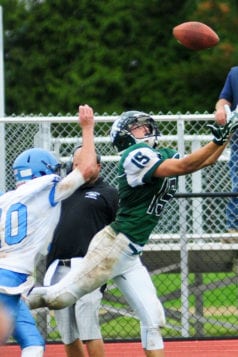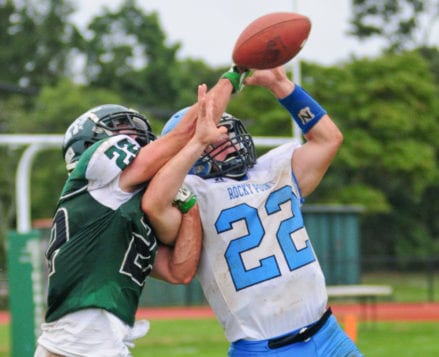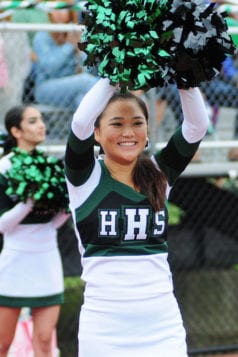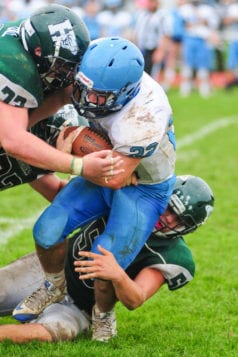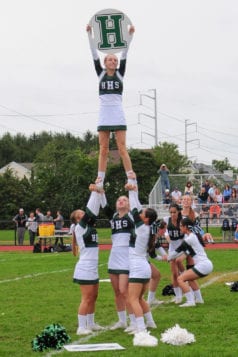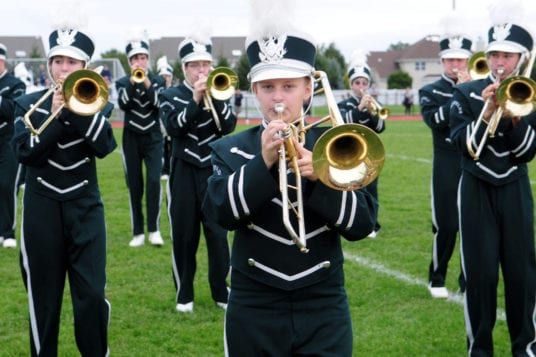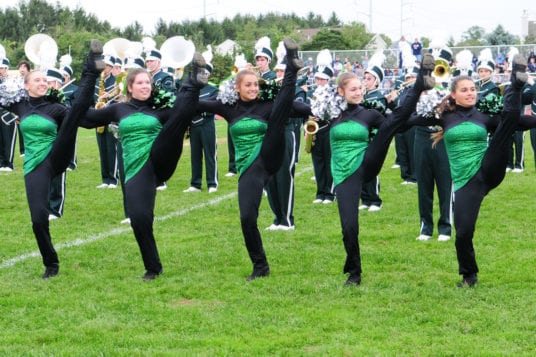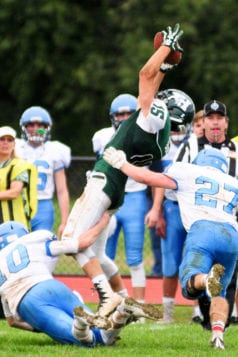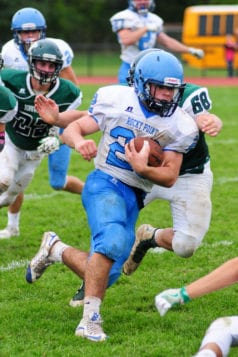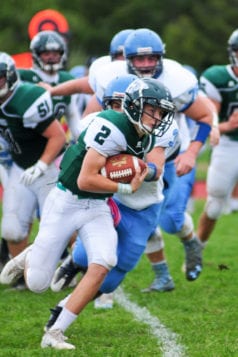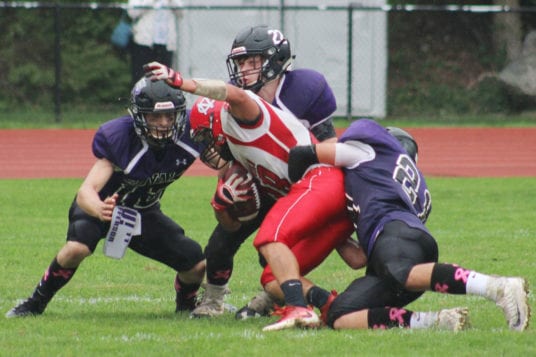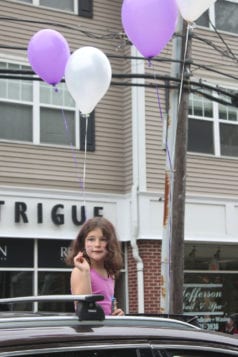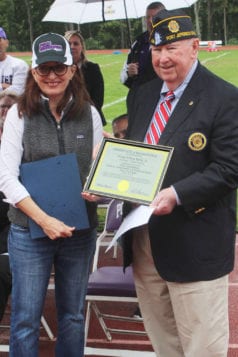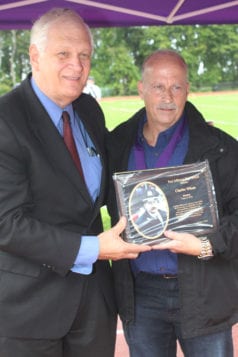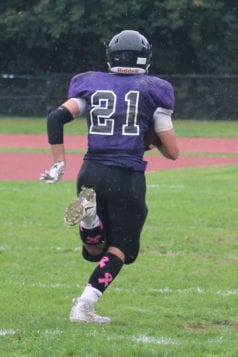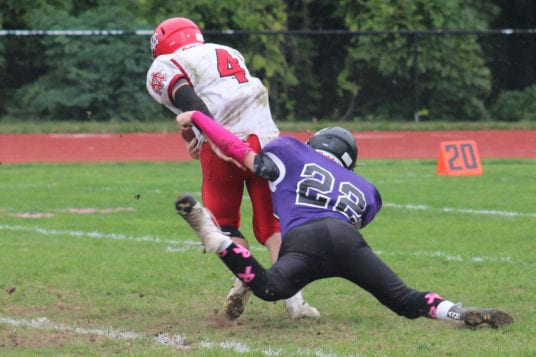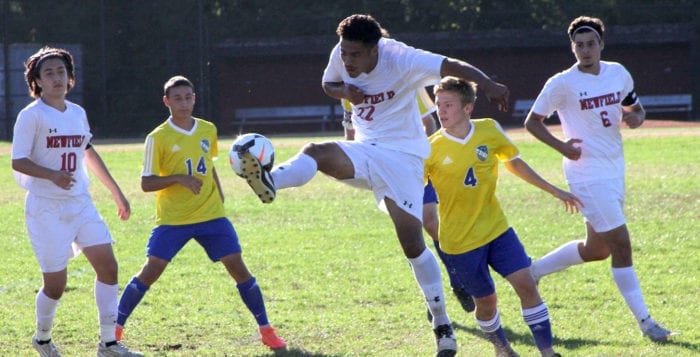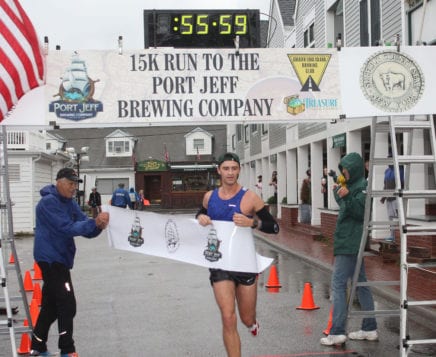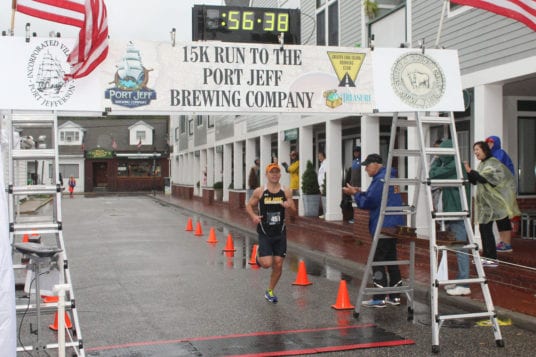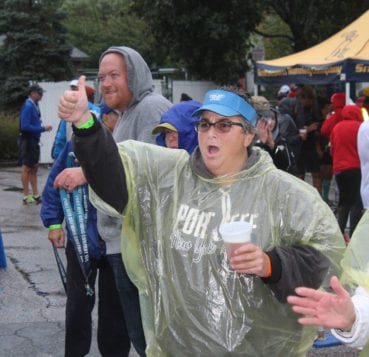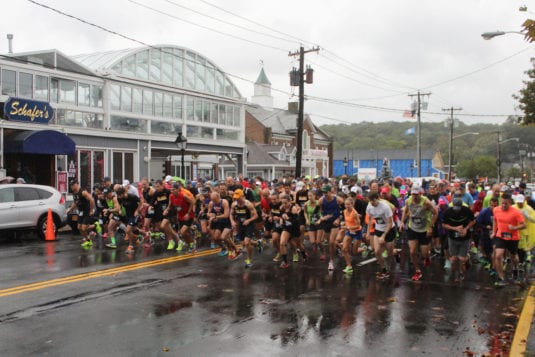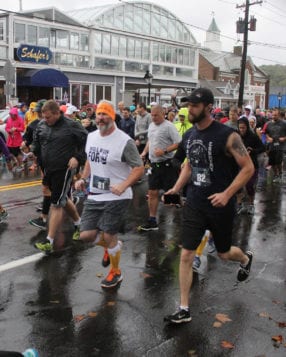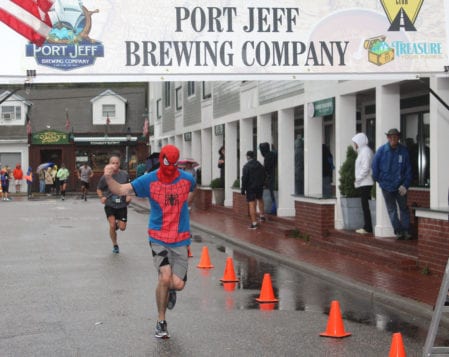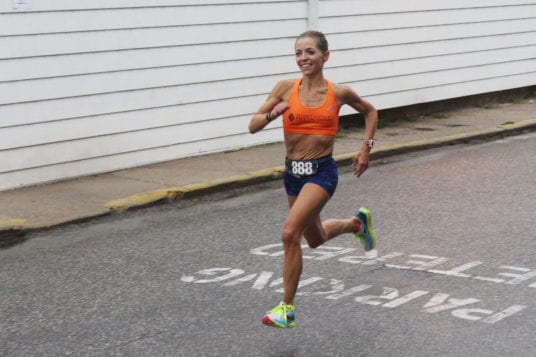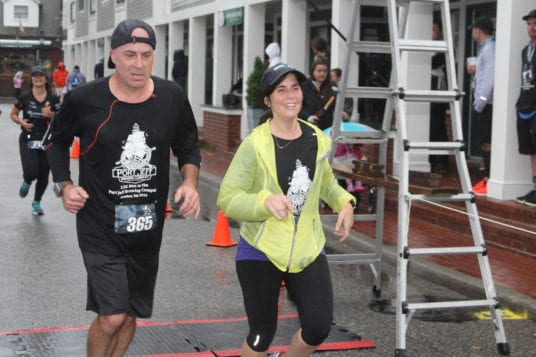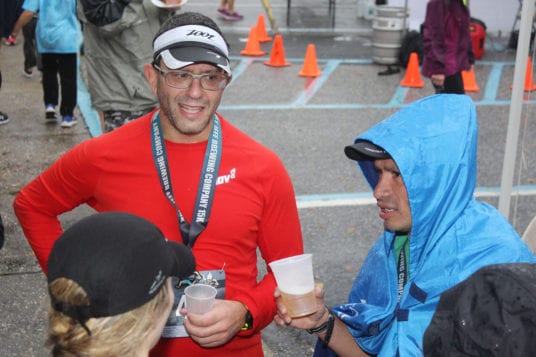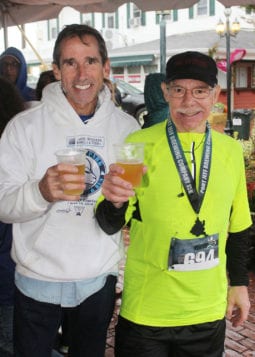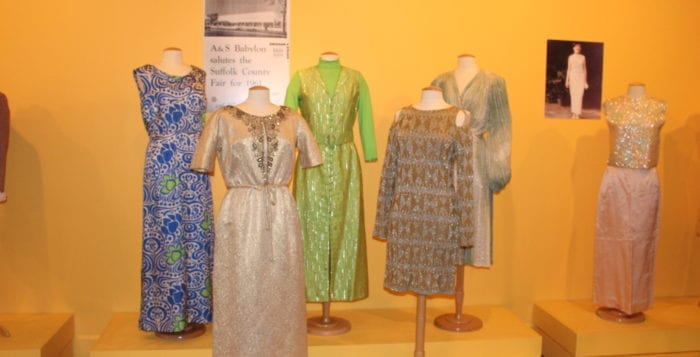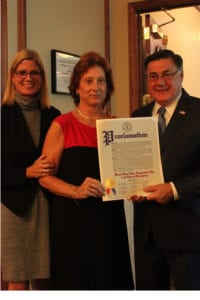By Bill Landon
The fourth quarter showed something the Tornadoes did little of all game: throwing.
Trailing by six points in the final minutes, the Harborfields football team came out hurling the ball against Rocky Point — making a push to tie — but time ran out on a fourth and long for a 20-14 homecoming loss.
Harborfields junior quarterback P.J. Clementi worked the sidelines and gained heavy yardage as the clock wound down to a minute left, airing the ball to junior wide receiver Gavin Buda, whose acrobatic catches and ability to get out of bounds after the grab brought the Tornadoes into Rocky Point’s zone. On a fourth and long, the Tornadoes were unable to convert as time expired.
“Rocky Point came out more physical than us in the beginning and that took away our [speed] and our running game, which forced us to pass, which is fine with us,” Harborfields head coach Rocco Colucci said. “These kids got a lot of heart, they fight to the bitter end no matter what the score is, no matter who we’re playing — they always believe they have a chance to win.”
Rocky Point struck first when junior running back Petey LaSalla punched into the end zone following a 22-yard run three minutes into the game. With senior quarterback Sean McGovern’s extra-point kick good, the Eagles were out front 7-0. McGovern shared the quarterback duties with junior Damian Rivera all afternoon.
“These kids got a lot of heart, they fight to the bitter end no matter what the score is, no matter who we’re playing — they always believe they have a chance to win.”
—Rocco Colucci
The Eagles struggled with their running game, and neither team scored in the second, as Rocky Point squandered a field goal attempt in the seconds before halftime.
Again, it was LaSalla who got the call to start off the scoring for the second half.
Early in the third, the junior broke several tackles, bounced outside and went the distance on a 32-yard run. McGovern’s foot put his team out front, 14-0.
LaSalla said he never doubted the outcome of the game.
“Not for a minute did we think we were going to lose,” he said. “Our defense really stepped up big today. We had a really good back field and we were able to shut them down, which forced them to throw the ball.”
After a sustained drive, Harborfields finally got on the scoreboard when senior running back Mark Malico ran off left tackle and took the ball 1 yard for six points. Harborfields senior kicker Thomas Beslity added another to make it a one-score game to trail 14-7.
“They’re always a tough team — we’ve had trouble with them in the past — obviously we had some trouble with them today,” Malico said of Rocky Point. “We turned it on [late] and we found our niche with our passing game with some nice catches on the sideline.”
On the ensuing kickoff, McGovern fielded the ball on his own 6-yard line, and sprinted up the left side, crosing midfield and jetting down the righ side line for a 94-yard kickoff return to stretch the Eagles lead to 20-7, with the extra-point attempt failing.
“We just had to stay consistent — every man has got to do their job and [not] overdo it,” McGovern said. “We battled through everything today between the turnovers and them coming back in the last two minutes, so we stayed calm and worked together.”
“We battled through everything today between the turnovers and them coming back in the last two minutes, so we stayed calm and worked together.”
—Sean McGovern
Harborfields switched to its passing attack with seven minutes remaining. Clementi worked the routes and the sideline, and connected with senior wide receiver Andrew Loiacono for a 70-yard catch and run to set up the Tornadoes’ next score. Clementi threw a screen pass to sophomore running back Thomas Sangiovanni, and he turned the corner jetted down the sideline for the touchdown. Beslity split the uprights to close the gap, 20-14.
“We analyzed our defense,” Sangiovanni said. “We had to execute the plays perfectly, we had to change a couple of things up and it worked out. [Rocky Point] just played harder than us in the end.”
Harborfields’ defense took a stand and a clock-eating drive forced the Eagles to punt with three minutes left. Rocky Point head coach Anthony DiLorenzo said he wasn’t surprised that the game was decided in the final seconds.
“We knew this was going to be a four quarter football game,” he said. “They’ve put it on film every week. We’ve done [that in only] two games so far, so our message all week was that this was going to be a four quarter game.”
Clementi went to the air picking apart the Eagles’ secondary, moving the chains downfield as he marched his team to Rocky Point’s 30-yard line with 1:37 left in the game.
On fourth down with 38 seconds, Clementi threw a strike to Buda crossing over the middle, but Rocky Point junior linebacker Alec Rinaldi knocked down the pass to seal the win.



